Published
on 17
Jun 2011
|
All rights reserved.
|
|
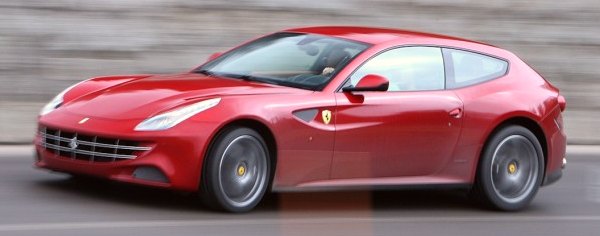 |
|
Can
the most unusual Ferrari ever change the fate of the 4-seater line?
|
|
One
strange
thing I observed in the past 25 years is: the largest
and most luxurious Ferraris are also the least commercially successful.
Take the 456GT for example, despite of its beauty, it sold only 3,200
copies in 11 years, which is half the number 550/575
Maranello managed. We don't have the final production figure of 612
Scaglietti yet, but judging from its rarity on streets, I bet its sales
could be even slower. That is sad for a car so good to drive. The 612
had few flaws – although some disliked its looks and some said it was
no faster than AMG CL65 – it was a truly amazing combination of GT
comfort and sportscar dynamics, feel and inspiration. Unfortunately, it
was a Ferrari. When it sits on the same showroom floor as 599GTB, its
excitement turns pale. People who enter Ferrari showrooms expect to
find the highest performance / excitement regardless of price. If they
look for ultimate comfort and luxury, they would turn to Mercedes or
Bentley. After all, those can afford a top-of-the-line Ferrari
should have plenty of wealth and garage space to swallow another
Mercedes /
Bentley / Range Rover / Rolls-Royce. Few find the need to compromise
between a supercar and a luxury car.
Having said that, Ferrari just won't let its luxury GT line die. If it
can raise comfort level significantly, no matter passenger
space, luggage capacity or ease of control, it might have a good chance
to lure customers from the luxury brands camp. The success of
Porsche Panamera tells us that is possible.
Consequently, we see the first ever "shooting brake" body wearing the
prancing horse badge. This is Ferrari FF. Its shape is clearly designed
to optimize luggage space and rear seat headroom. It also helps hiding
the fact that the roof line is 35 mm taller than that on 612
Scaglietti, so the shooting brake shape actually looks less compromised
than it would have been in a tall coupe form. Give it some curvy
fenders, 20-inch wheels, aggressive air scoops, large diffusers and
458-style LED headlamps, the overall visual effect can be even
head-turning ! Well, it's not 456-beauty, but it is definitely more
striking than Panamera.
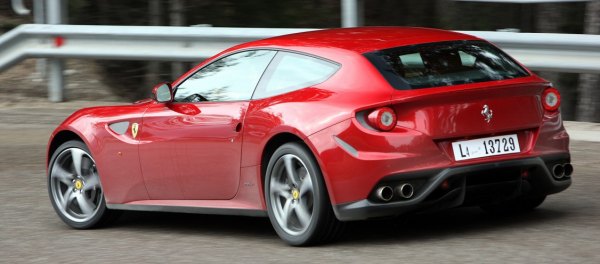 |
|
Shooting
brake, 4-wheel-drive and the FF name: a tribute to Jensen?
|
|
Apart from the shooting brake body, another thing distinguishes the FF
from any other Ferraris until to date is a technology Maranello
called 4RM, which stands for 4-Ruote Motrici in Italian or simply
4-wheel-drive in our language. This is Ferrari's first 4-wheel drive
system. It explains why the car is called FF, an acronym for "Ferrari
Four", and why coincidentally it has the same name as a famous 4WD
classic, Jensen FF,
although in the latter case it means Ferguson Formula. By the way,
Jensen FF was also a shooting brake design. Is Ferrari paying tribute
to it ?
When Ferrari develops a 4WD system, it would be different to others. To
Ferrari, rear-wheel drive is always the most desired configuration
except in extreme cases where the car is struggling for traction.
Conventional permanent 4-wheel-drive systems are just a waste of mass
and energy for most of the time. Ferrari designed its 4RM to be a
part-time 4WD system. In other words, in normal running conditions the
FF is purely rear-wheel drive. Only when it struggles for traction the
front wheels will be engaged quickly for very short moments to sort
things out. Even then no more than 20 percent of power will be assigned
to the front wheels, so the rear-drive characteristic is largely
maintained. Because of the light requirement for front-wheel drive,
Ferrari can adopt a very simple design that does away center
differential, front differential and complicated
drive shafts altogether. Instead of them is a Power Transfer Unit (PTU)
which
contains a gear set and a pair of multi-plate clutches. The compact PTU
is installed just in front of the engine, taking power directly from
the
crankshaft
and transferring to the front wheels through its two clutches.
It also doubles as a torque vectoring device. (More details of its
construction and theory can be found in Technical
School.) Compare with conventional 4WD systems working with front
engine and transaxle gearbox, such as the one serving Nissan GT-R, 4RM
cuts 50 percent weight and saves the need for a bulky transmission
tunnel.
The 4RM and Ferrari's FR drivetrain is a match made in
heaven. The PTU can only be fitted to a car whose engine is mounted
completely behind the front axle line. No problem to Ferrari, as the
existing 612 and 599 are already so engineered. On the FF, the
front-mid-mounted engine and rear-mounted gearbox results in a perfect
weight distribution of 47:53 front to rear.
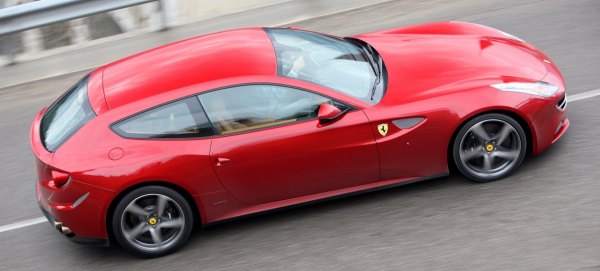 |
|
4RM
and Ferrari's FR drivetrain is a match made in heaven
|
|
Compare with the 612, FF has about the
same
length and width, whereas wheelbase is stretched by 40 mm to just under
3 meters. This a large car indeed – nearly as large as Porsche Panamera
– but Ferrari's aluminum spaceframe chassis and 4RM system help it to
undercut a Panamera Turbo by 100 kilograms, let alone Mercedes CL65 AMG
(+290 kg) and Bentley Continental GT (+440 kg). The large body packs
not only four adult seats and 450 liters of luggage space but also a
lot of technologies we have expected, such as new 5-link rear
suspensions, magnetorheological adaptive dampers, Brembo ceramic disc
brakes and 7-speed dual-clutch transaxle. They have all made
appearance on the smaller California, but they are not exactly the same
on FF. For example, the magnetorheological damping is now the third
generation (versus first gen on California and second gen on 458), and
the Getrag 7DCL750 gearbox is a high-torque (max 553 lbft) version to
take on the V12
engine.
The 6262 cc 65-degree V12 is derived from the Tipo 140
unit of Enzo and 599, but enhanced with direct fuel injection, 12.3:1
compression and
automatic stop-start, not to mention the additional 300 cc of
displacement. Ferrari is not going to give its luxury GT engine the
highest possible tuning. Even so, this one is still capable to produce
an Enzo-matching 660 horsepower at 8000 rpm, or 120 horses up from the
5.75-liter engine on 612 Scaglietti. Furthermore, its maximum torque
breaks Maranello's own record, with 504 pound-foot reached at 6000 rpm.
As a GT engine, its torque curve is tuned to be flatter than those on
Ferrari's sports cars. From as low as 1750 rpm there is at least 80
percent of peak torque, or 403 lbft, available for disposal. If you
don't understand what it means, think about a Lamborghini V10 has its
peak torque brought forward from 6500 rpm to 1750 rpm !
As a result, the FF is capable of 0-60 mph in 3.6 seconds, half a
second quicker than its predecessor, and its top speed is lifted by 12
mph to an astonishing 208 mph. Yes, it is once again the fastest
4-seater in the world !
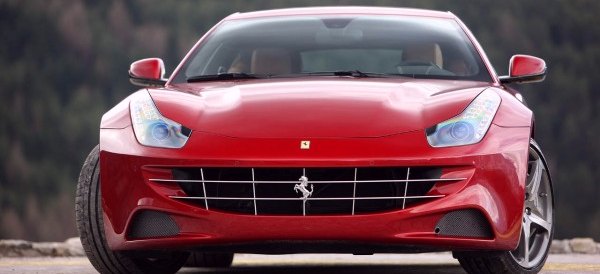 |
|
208
mph guarantees the highest place in the 4-seater world
|
|
Meanwhile, fuel consumption and
emission have
been cut by 25 percent, thanks to the direct injection, automatic
engine stop-start as well as the new 7-speed gearbox whose top gear is
an overdrive.
On the Road
Once you settled in the front seat, you will be amazed for its
spaciousness. Up front, there is abundance of room in all dimensions.
Headroom is surprisingly generous for a Ferrari. Facing you is an
environment familiar to modern Ferraris – lots of leather and alloy,
multiple round air vents, a cheap sat-nav on the center console, an
instrument pinnacle consisting of two analogue dials and a TFT screen,
and a video-game-style steering wheel with an awful lot of functions to
control. It's neither the most tasteful nor the highest quality cabin,
but since it is a Ferrari, you can forgive it.
The rear seats might look snug and are more difficult to access, but
they are truly adult seats, unlike the case in Bentley Continental GT
or even Aston Martin Rapide (and that's a four-door !). Six-footers
will have no problem to spend hours at the back of FF. Luggage space is
equally impressive. With rear seats in place it measures 450 liters,
more than that on Porsche Panamera. Fold the rear seats and it will be
expanded to 800 liters. You will hardly need more.
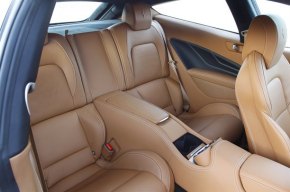 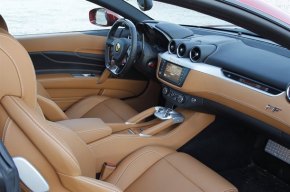 |
|
Six-footers
will have no problem to spend hours at the back
|
|
Fire the V12 and you won't be
disappointed.
Just like any Ferrari V12s, it has a very wide spectrum (8200 rpm) for
you to access, and the power delivery is creamy smooth. Its low inertia
is evident from the sharp response to throttle. Its linearity is the
greatest companion to keen drivers. Moreover, the engine makes
beautiful sound. It could stay behind the background when unstressed,
or turns insane when it screams to redline – that thundering howl is
more 599 GTO than GTB. In other words, a huge improvement from the
civilized 612.
The FF is fast, unquestionably. It might not topple a Panamera Turbo S
from rest to 60 mph (due to the limited front-end traction as well as
the lack of turbocharged torque), but once it is up to speed it keeps
rocketing to the horizon with its endless power. It arrives 124 mph
(200km/h) in 11 seconds flat, almost 2 seconds ahead of the Porsche.
The higher the speed, the more advantage its unrivalled top end power
shows. However, if you expect the same sense of speed as 458 Italia or
599GTB, you might be a little disappointed. The extra weight here
dampens its low-gear explosiveness to a certain extent. This mean while
the FF is comfortably the fastest 4-seat GT in the world, it still
trails Ferrari's
pure sports cars for sensation.
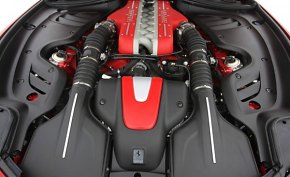 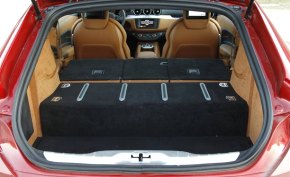 |
|
The
thundering howl is more 599 GTO than GTB
|
|
The FF is a perfect tool for
cross-country
blaze. Its dual-clutch gearbox might be less incisive than that on 458,
but is smooth and fuss-free. Its ride is absorbent for country roads.
Its steering, geared to a super-quick 2.3 turns lock-to-lock, makes it
incredibly nimble on twisty roads, just like a much smaller car. The
4RM system provides bags of traction regardless of road conditions. Not
even thick snow surface can have it caught out. Such an all-weather,
all-road versatility sometimes lead you believe you were driving a
rally car !
Nevertheless, on dry roads the 4RM is not always welcomed. In slow to
medium speed bends, you can feel the intervention of 4RM introduces
understeer, straightening the nose and killing the chance of power
oversteer. This sudden change of character is at odds to the otherwise
rear-biased handling of the car. It makes the chassis less predictable
and less intuitive to exploit than 599 as well as its predecessor.
As a result, the FF is probably not as thrilling to drive as you would
expect a Ferrari to be. It trades some dramas for security and
versatility. That might split opinions. While it still possesses a
clear dynamic edge over Porsche, Bentley or Mercedes-AMG, whether it is
worth double the price is not so clear. Anyway, Ferrari will be content
if it can sell 800 cars a year. That is only a small fraction of its
cheaper alternatives. |
Verdict:     |
Published
on 2
Jul 2016
|
All rights reserved.
|
|
GTC4 Lusso
|
|
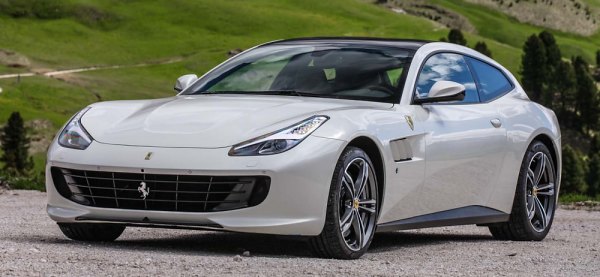 |
|
The
GTC4 Lusso is not a revolutionary update, but all its modifications add
up to a sizeable improvement over the FF.
|
|
Although it is not a common
sight on street, every time I see Ferrari FF, its shape and its noise
rock me. There is nothing quite like it on the market – a low-slung
shooting brake with V12 power and a unique part-time 4WD system. Time
goes quickly. Now the car is 5 years old thus it is time to have a
refresh. The FF has been updated and given a new name, GTC4 Lusso.
Despite of the new name, it is not a big leap like the one from 458
Italia to 488GTB, nor from California to California T. Traditionally,
mid-life updates of Ferrari front-engined 4-seaters are rather subtle.
This has been the cases of 400, 400i, 412 and 456M (612 even got no
update during its 7-years life). Why? Because the sales volume of this
line has always been a few hundred units a year, which means it takes
longer time to recoup the initial investment. Compared with its
predecessors, the GTC4 Lusso is already very lucky, because its gets an
all-new interior, a small power boost and real chassis update.
But first of all, it has received a nice facelift. The original FF was
well-proportioned, but there were many rough edges in its styling
details. GTC4 has them polished. Its nose gets cleaner thanks to
combining all intakes into a wider front grille. The headlights get
slimmer. The contoured bonnet is more stylish. As are the shark-like
side louvers, smaller quad-taillights, redesigned diffusers and
reshaped tail spoiler. Overall, it looks sleeker and more elegant than
the FF. Its drag coefficient is lowered by 6 percent, too.
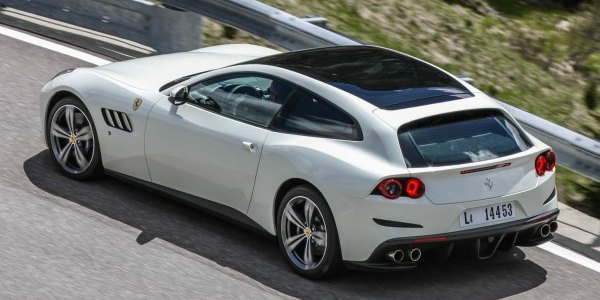 |
|
Refinement,
rather than performance, is the biggest improvement the car made over
the FF
|
|
Even better is the cabin. The entire dashboard, steering wheel, seats
and infotainment system are all new. Its materials and build quality
are finally top notch (although Bentley Continental GT remains better).
The infotainment system with its large, 10.25-inch touchscreen is a
night-and-day difference to the cheap one of FF. Its graphics are
clear, the interface easy to use and operation is slick. Many controls
have been integrated into the flat-bottom steering wheel for easier
access, including phone, audio, instrument configuration and Manettino
switch. There is also 16 mm more legroom sculpted from the rear seats,
so the car can truly take four 6-footers on board. The sense of
openness can be enhanced further by the panoramic glass roof
(introduced in late 2012). At the back, the boot can swallow 450 liters
of luggage or 800 liters with the rear seats folded. Sounds awful for
an “estate”, but it is already a revolution to Ferrari.
The engine is still that 6.3-liter V12, but it gains 30 horsepower and
10 lbft of torque thanks to increasing compression ratio from 12.3:1 to
13.5:1 (like F12) and revised exhaust, making a total of 690 hp and 514
lbft. I think Ferrari could have easily reduced its emission yet
boosting performance further by using the turbocharged V8 of 488GTB,
which nearly matches the V12 for top end power while overwhelming it in
torque, especially at lower revs as the V12 takes 5750 rpm to realize
its peak torque. However, it is a joy to see the good old naturally
aspirated V12 lives on. Its sound, smoothness, crisped throttle
response and linear power delivery are unrivalled, as is its enthusiasm
to chase the 8250 rpm red line. More so than the 488GTB motor, you need
to work harder to squeeze rpm and power from it, but the rewards and
satisfaction are immense. Commit to the driving, you can get the car to
60 mph in 3.3 seconds and perhaps top 208 mph if you can find a clean
stretch of Autobahn, which is more than enough to scare your
mother-in-law at the back seat.
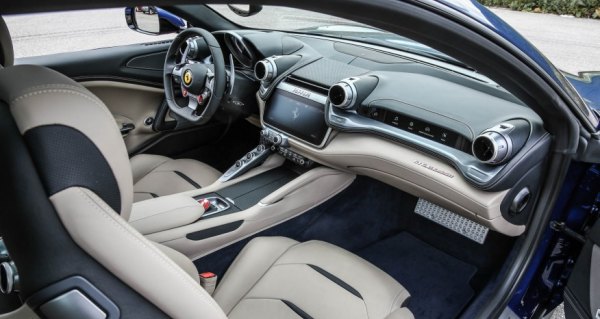 |
|
Its
materials and build quality are finally top notch, while infotainment
system is up to date.
|
|
Drive slowly, however, the GTC4 Lusso becomes a gentle cat. In fact,
refinement, rather than performance, is the biggest improvement the car
made over the FF. Ferrari added sound insulation, reinforced the
suspension pick-up points and adopted a quieter air-con to reduce noise
level in the cabin. Furthermore, the new exhaust system is made quieter
before its flap opens. As a result, the car is hushed when being driven
relaxingly – perhaps too quiet for a Ferrari. But up the pace and the
exhaust flap opens to release the tiger side of the car, so it loses no
excitement whenever you want. Likewise, ride quality at “bumpy”
suspension mode is surprisingly smooth, while body control in sportier
modes is better than any big GTs from Bentley or Mercedes. The
twin-clutch gearbox also shifts seamlessly. The GTC4 is more versatile
than FF.
Its handling is also better than before. Although it gains 40 kg in
kerb weight, the new car has adopted the 4-wheel-steering system from
F12 tdf. The purpose is different though – on the tdf, the 4WS is used
to offset the inherent oversteer built into the car (it adopted wider
front tires and more aggressive suspension geometry). The GTC4 does not
alter its tires or suspension geometry, so the function of 4WS is to
tighten its turning radius in slow corners and to stabilize high-speed
lane change like most other 4WS systems used elsewhere. However, unlike
rival systems, it steers the rear wheels in opposite direction briefly
(for about a tenth of a second) at the initial cornering phase in order
to sharpen the turn-in. This makes the big Ferrari feels more agile
than before. The light yet super-quick steering rack still takes some
getting used to. You have to recalibrate your mind how responsive such
a big GT can be, then scale back you inputs to suit. However, the
addition of Ferrari’s Side Slip Control algorithm (from 458 Speciale),
which works with E-diff and adaptive dampers to precisely control the
slip angle in bends, should make power slide more readily. That said, I
suspect how many owners would take the GTC4 Lusso to race tracks.
On looser, greasier roads, the 4RM system provides dependable traction
and grip. Itself is also updated, with faster and more precise power
transfer to the front axle. It is also capable to direct more power
(now 90 percent) to either front wheel. By integrating the control
system of 4RM with the 4WS system into something called 4RM-S, the
vices of the previous 4RM seem to be largely rectified. There is less
understeer when the front PTU engaged. In fact, now it is hard to sense
whether power is being shuffled to the front axle. It goes without
saying the best 4WD system is the one you don’t know its existence.
So the GTC4 Lusso is not a revolutionary update, but all its
modifications add up to a sizeable improvement over the FF. It’s not
quite as sharp or involving to drive as the F12 or 488, of course, but
as far as a 4-seater is concerned, nothing else comes close. It is
finally a 5-star car.
|
Verdict:      |
Published
on 28
Mar 2017
|
All rights reserved.
|
|
GTC4 Lusso T
|
|
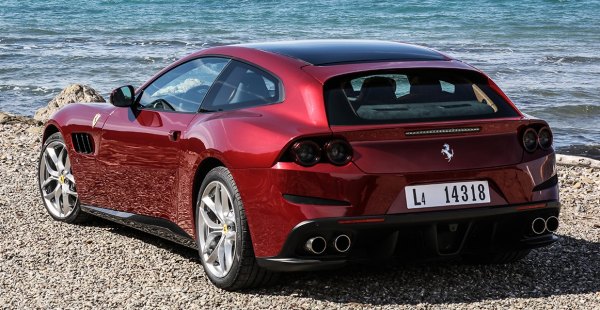
|
|
V8
turbo or V12, that is the question.
|
|
People said this is the
first ever Ferrari to offer engine choices: a 6.3-liter V12 badged as
GTC4 Lusso or a 3.9-liter twin-turbo V8 called GTC4 Lusso T, where T
stands for turbocharged, obviously. To some extent, this is not true.
In the early 1980s, Ferrari 308GTB was offered with a 2-liter V8 turbo
beside the standard 3.0 V8 in order to fit into lower tax band in the
Italian market. However, what Ferrari does this time is not for tax
reasons. Although the smaller V8 does enjoy tax benefit in China, which
taxes cars over 4 liters heavily, the key reason seems to be reducing
emission to comply with EU directive, because switching to the turbo V8
cuts CO2 emission by 24 percent.
Considering the low production volume of GTC4 Lusso, it might not help
Ferrari much, but it could test customer reaction and pave the way for
more V8 models in the future, just like what Bentley did with its
4-liter V8 a few years ago. Moreover, with a suitable V8 already
available, it would be a waste not to try.
The flat-crank twin-turbo V8 on
this car is derived from that of California T. Like the latter, it
displaces 3855
c.c., and its redline is set at 7500 rpm rather than the 488GTB’s 8000
rpm. Producing 610 horsepower, it
loses 80 hp to its V12 big brother, but it strikes back with a higher
peak torque (560 lbft vs 514 lbft) and a flatter torque curve. This
means, the car’s acceleration is nearly identical to the V12 model,
quoting 0-60 mph time in 3.4 seconds. It sacrifices 9 mph at the very
top end, but who cares when it is already good for 199 mph?
On the road, the new V8 feels every bit a world-class turbocharged
engine: free-revving,
remarkably lag-free and linear. Unlike
the boosty turbos of many modern performance cars, Ferrari’s variable
boost control is brilliant to simulate the linear power delivery of
naturally aspirated motors, so the V8’s peak torque arrives from 3000
rpm rather than 1500 rpm, and it tails off slowly beyond 5250 rpm. It
is willing to spin towards the 7500 rpm redline, whereas most others
give up at 7000 rpm. It would have been
better still if it were allowed to top 8000 rpm like the 488, because
you can feel that it has more to come at the moment of fuel cut-out.
Compared with the V12, its chief advantage is the thicker mid-range
torque, which allows you to drive in all occasions in 3rd gear,
even in an uphill hairpin, and you can keep it there
up to any legal speeds. Another advantage is a longer driving range, as
the same fuel tank should theoretically return 24 percent longer
mileage.
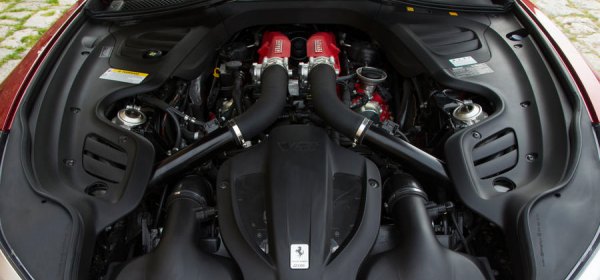
|
|
The
V8 has thicker mid-range torque for effortless performance, but its
sound quality is no match with the V12.
|
|
On the downside, the turbocharged V8 does lose the high-revving
sensation and the addictive howl of the V12. Its induction and exhaust
are deliberately made quieter than the 488, which is right for a
4-seater, but its sound quality is no match with Ferrari's traditional
V12, of course.
The V8 is not the only major change, because the Lusso T also drops the
controversial 4RM part-time 4WD system and reverts to good old
rear-drive format. As a result, the whole car is 55 kg lighter.
Considering the 4RM system alone accounts for 45 kg, you might be
disappointed that the change from V12 to V8 turbo saves only 10 kilos.
Anyway, the shorter engine now sits further back in the long engine
compartment to benefit weight distribution, which has another 1 percent
shifted from the front to the rear axle (now 46:54). Meanwhile, the
GTC4 Lusso T does not alter its tires front and rear, so you can see it
should find more front-end grip and understeer less.
In reality, the prediction comes true. The car steers slightly sharper
than the V12 model. The balance is even sweeter. Agility is higher.
Despite the loss of 4WD, the car still provides excellent grip on the
dry. The nose points responsively and accurately like no other
4-seaters, partly thanks to the ultra-quick steering, partly due to the
4WS system. Turn off the stability control and it is ready to let you
drift. Make no mistake, the GTC4 Lusso T is not the true rival of
Bentley Continental Supersport or Mercedes S63 Coupe. It is more like a
4-seat sports car than an Autobahn grand tourer. Its handling, agility
and feel
are beyond the reach of those cars. Only Aston Martin DB11 and Rapide
are made
with the same philosophy.
Strangely, the ride quality and cruising refinement of GTC4 Lusso T
seem to be poorer than the V12 model remembered, although their
suspension setting and noise insulation are theoretically the same.
Anyway, both can't match the fluidity of Aston DB11 on less than smooth
surfaces. Those
looking for a beautiful yet comfortable cross-country GT will
definitely prefer the Aston. However, the Ferrari is rather unique on
the market. Its combination of 4-adults accommodation, top-notch
performance and sports cars handling is exclusive. The only
question is: V8 turbo or V12? The former is slightly sharper to steer
and cheaper to buy, but the latter has a greater engine and
all-weather security, so it depends on your preference. Neither won’t
be a wrong choice.
|
Verdict:      |
|